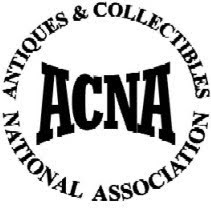
I have yet to find anything that I do not like about collecting and selling antiques, but some of my favorite days are spent working in The Shop. Yes, I'm surrounded by delightful things - each with its own special history - but best of all, I get to talk with the interesting people that collect and value their treasures as I do. Most of the folks I meet collect items for a specific reason - items that remind them of their childhood, parents, grandparents; items that are native to their home place; items that relate to their line of work - the list goes on and on, including the occasional collection of oddities - like old neti pots.
If you are thinking about starting a collection you might want to start with something easy to find such as vintage postcards from your favorite vacation spot or old hats you can wear to express your own sense of style. These collections will make great conversation starters and even give you opportunities to forge new friendships with fellow collectors!
Expect your collections to change throughout the years as your personal taste and life experiences evolve. My current collections lean toward vintage glass made by any WV glassmaker as well as a deep attraction to the Ohio art potteries. The pictured shelf above contains my childhood collections of my old Busy Boy clock, my Kanawha Glass mouse and Blenko owl, picture of Dad, doll made by Mom, Grandma's brooch, the handtooled leather belt of my bell-bottomed teen years, and most dear to my heart - Dad's diary - an obvious family theme that is steeped with my WV roots.
 This adorable little guy was made by A. H. Heisey & Co. sometime between 1941 and 1952 - near the end of Heisey's 62 year reign as a major producer of high quality tableware in the United States. While Heisey glass is not always marked, if present, the mark is easily distinguishable as a simple capital H inside a diamond - as seen in the figurine pictured above. Heisey & Co. was purchased by Imperial Glass Corp. in 1957.
This adorable little guy was made by A. H. Heisey & Co. sometime between 1941 and 1952 - near the end of Heisey's 62 year reign as a major producer of high quality tableware in the United States. While Heisey glass is not always marked, if present, the mark is easily distinguishable as a simple capital H inside a diamond - as seen in the figurine pictured above. Heisey & Co. was purchased by Imperial Glass Corp. in 1957.












